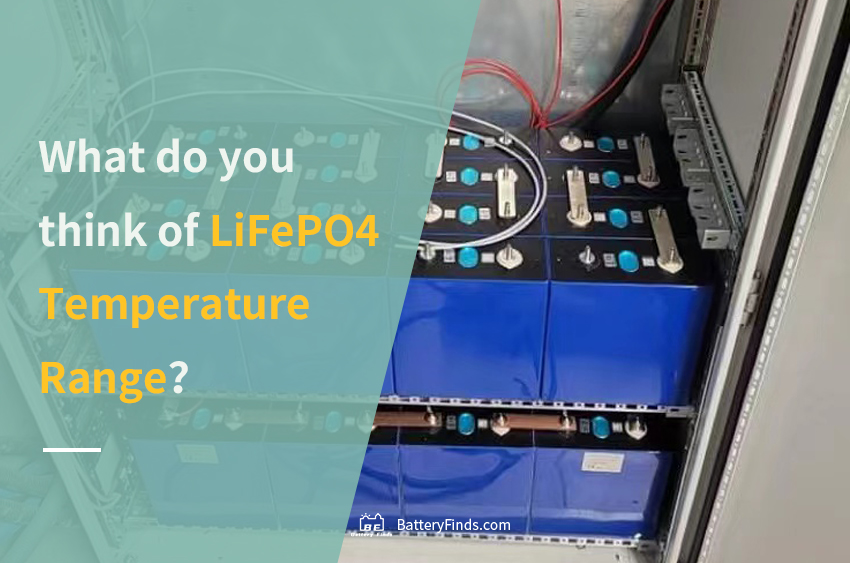LiFePO4 battery is a very high-quality battery type, and its properties are loved by many people. But the LiFePO4 temperature range is a place that many people care about.
What is the LiFePO4 Temperature Range?

The LiFePO4 temperature range generally indicates the temperature that the LiFePO4 battery can adapt to under the premise of ensuring performance. At present, it can basically be considered that the LiFePO4 temperature range is -20°C ~ 40°C, of course, this can only be used for discharge performance. Lithium-ion batteries cannot be recharged by themselves at 0°C and below, which is also a place that is often criticized. So in the case of low temperature, many people use 2 methods: use a battery heater or do storage.
How do LiFePO4 Battery Perform in Different Temperature Ranges?
For users of LiFePO4 batteries, the most noteworthy parameters should be capacity and voltage.
Capacity:

This is the most noteworthy parameter. The size of the capacity can be said to directly affect the performance of the battery, and it is also an important reference value to measure the quality of the battery. Generally speaking, the bigger the capacity, the better, of course, the bigger the capacity, the more expensive the battery is.
According to the data, the LiFePO4 battery has the best performance when the LiFePO4 temperature range is above 10°C. The capacity will reach the rated value at about 15°C and will reach a state slightly higher than the rated capacity at room temperature of 25°C. In addition, due to the characteristics of LiFePO4 batteries, the performance is even slightly improved at a certain high temperature. For example, at 40°C, it will reach about 120% of the rated capacity.
Of course, at low temperatures, the performance of LiFePO4 batteries will be relatively weakened, but no matter what batteries have such problems. In the case of -20°C ~ -40°C, it can only reach about 60% ~ 40% of the rated capacity.
The conclusion is that LiFePO4 battery is suitable for use in scenarios where the temperature is suitable, and the performance is even better at high temperatures, while it is not recommended at low temperatures.
Voltage:

Although the nominal voltage of LiFePO4 batteries has always been 3.2V, the actual situation is definitely not stable at 3.2V. And it is in a fluctuating state in different LiFePO4 temperature range.
Taking a LiFePO4 battery with 50% SOC as an example, in the range of -20°C ~ 50°C, the voltage is always stable between 3.2V ~ 3.3V, which is a very stable state for the battery, very suitable for power input and output. The 15% SOC LiFePO4 battery will have relatively large fluctuations, especially at -20°C, the voltage can only be around 3.0V, and can only be guaranteed to be between 3.2V at room temperature.
This shows that the voltage varies at different SOC and at different temperatures, and LiFePO4 batteries with significantly lower SOC are more affected by temperature.
For the use of daily energy storage, in fact, the effect of temperature on LiFePO4 batteries is not particularly large, and it is within an acceptable range, because energy storage is not necessarily used frequently. However, if it is used in scenarios such as electric vehicles, it will have a relatively large impact. Due to the limitation of temperature, the performance degradation of the battery is a relatively big blow to electric vehicles.
Summary
A proper understanding of the LiFePO4 temperature range will help you to use it better. LiFePO4 batteries have many unforgettable benefits, such as extremely high safety, long life, very lightweight design, and good energy density… only when you know more about LiFePO4 batteries, you can maximize its performance and make your life more convenient.

